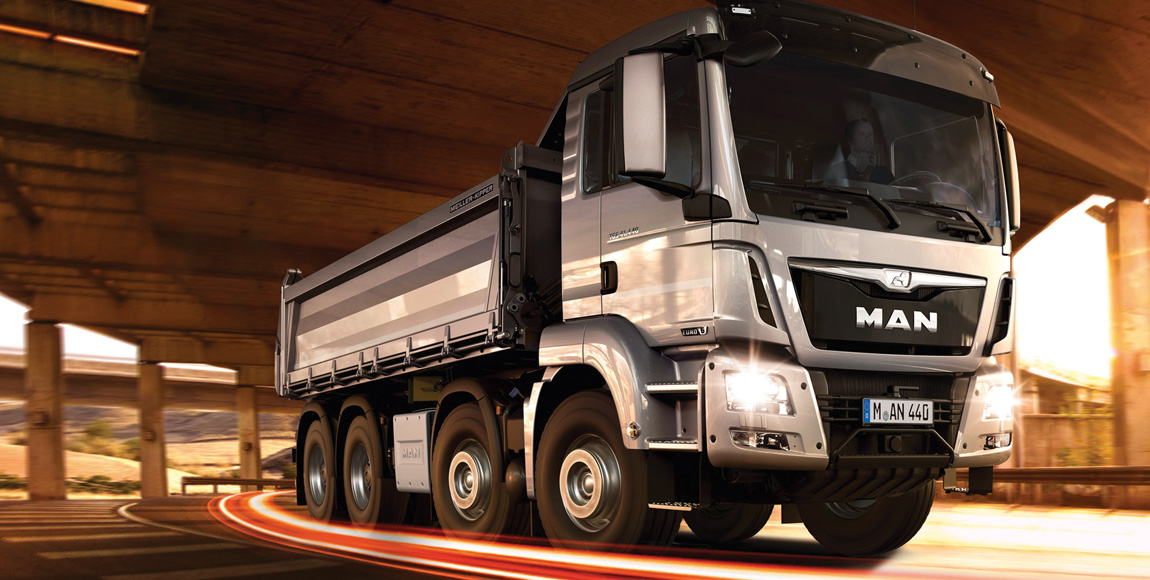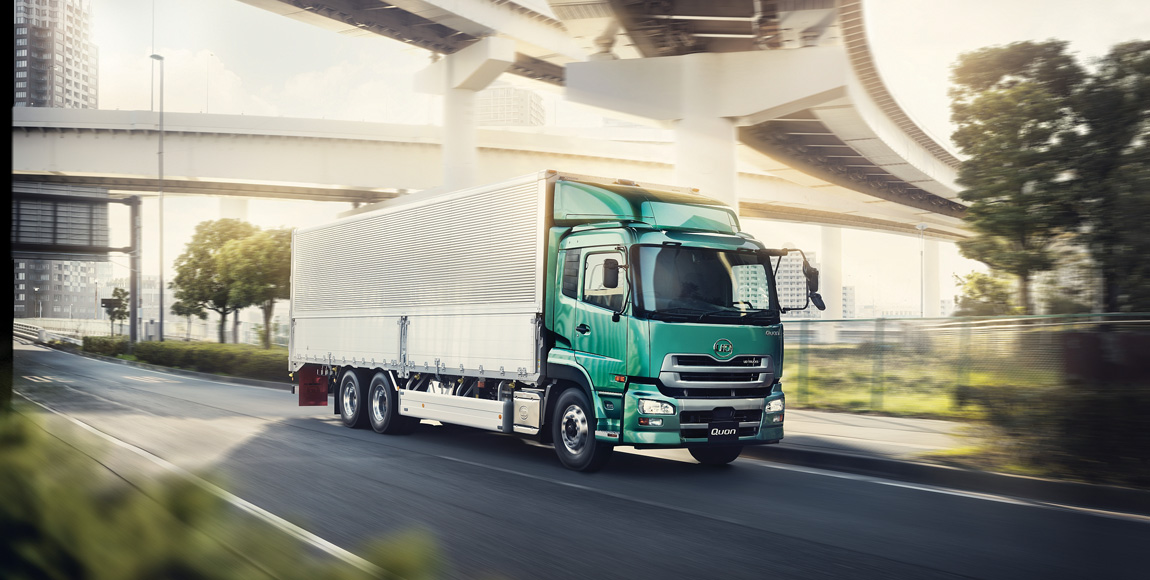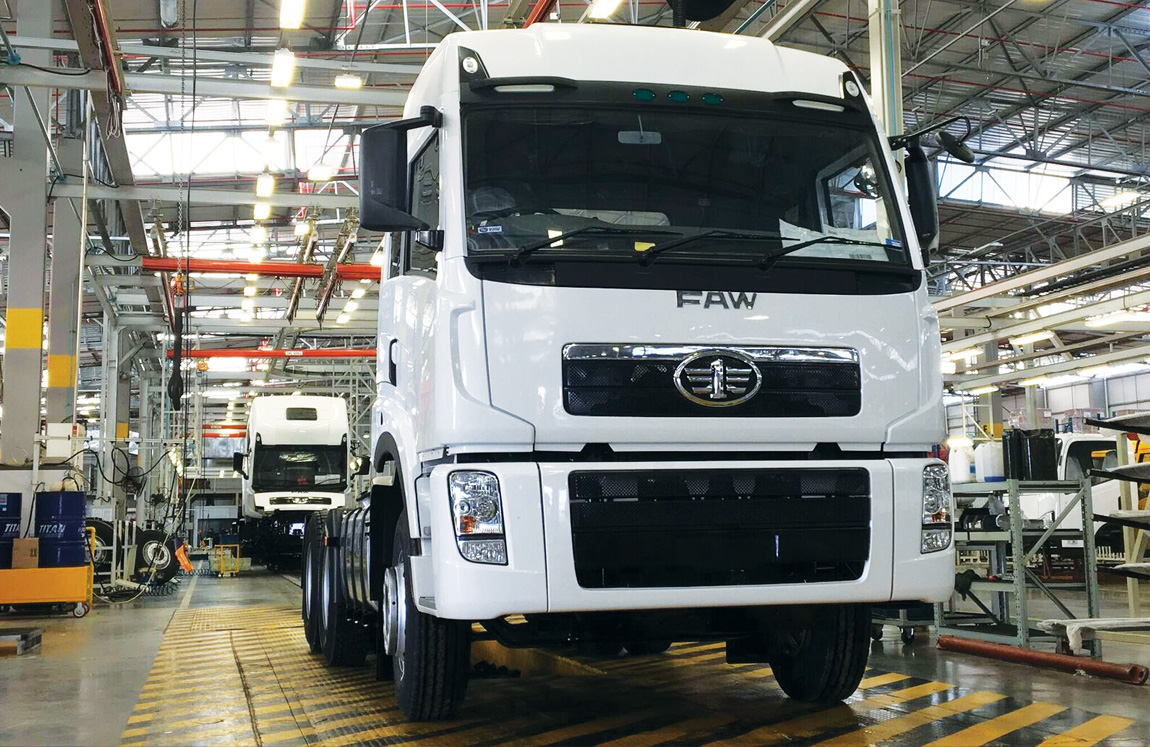When bigger really is better

The extra-heavy commercial vehicle (EHCV) segment is the backbone of the South African trucking industry. Gareth Greathead explores the dynamics of the segment
According to the latest results released by the National Association of Automobile Manufacturers of South Africa (Naamsa), Associated Motor Holdings (AMH) and Amalgamated Automobile Distributors (AAD), by the end of September this year a total of 19 939 new trucks and buses had been retailed.
Despite tough economic conditions, the overall sales in the South African commercial vehicle market increased by 2,3 percent year-on-year at the end of the third quarter in September. Unfortunately, not all sectors have experienced equal growth with some doing better than others.
Sales in the medium commercial vehicle segment were down by 2,3 percent by the end of the third quarter with a year-to-date total of 5 730 units.
Heavy commercial vehicle sales were up 1,7 percent year-on-year to 4 039 units, while the EHCV segment increased by 5,9 percent to 9 391 new vehicles sold. Bus sales declined to 779 units, a 1,9-percent decline.
As such, the positive results can be attributed, at least partially, to strong sales of EHCVs, which continue to defy market trends and a sluggish economy.
Why extra heavies?
Whether it’s the transport of mining commodities from the mines to export harbours, fast-moving consumer goods from harbours to re-distribution hubs, or passenger cars from assembly plants to retail dealerships – the vast distances between South Africa’s collection and distribution points creates a demand for long-haul transport solutions.
Dave van Graan, head of special projects at MAN Automotive, says: “The EHCV sector is what the industry refers to as the ‘premier league’ of commercial vehicles. It is also an extremely demanding sector to satisfy,
as operators continuously seek to improve and professionalise themselves to offer a better and more efficient solution.
“To stay on top of the megatrends of future transport solutions requires massive investment by the original equipment manufacturer (OEM) in product development.
“Two thirds of the EHCV segment is made up of long-haul truck tractors – mainly 6×4 prime movers. As the saying goes – without (long-haul) trucks, South Africa stops.”

Local assembly and export
Through its Automotive Investment Scheme (AIS), the government aims to promote investment, boost production and stimulate economic development. Part of this initiative included establishing favourable trade agreements with neighbouring countries in an effort to provide a larger market for manufacturers.
In September, South Africa exported a record number of vehicles into sub-Saharan Africa. At the same time, year-on-year exports of commercial vehicles went up by one percent, or 565 units. Surprisingly, cross-border sales of EHCVs decreased by 23 percent (321 units).
Anders Friberg, general manager of truck sales and exports at Scania South Africa, says: “It has been a rather challenging year when it comes to the export of ECHVs. There are many different reasons contributing to these challenges; one would be based around politics and the lack of hard currencies. However, Scania South Africa does see potential for resolution and subsequent growth in our export markets. Today, approximately 20 percent of our total sales go to export.”
In July 2014, FAW provided the first large-scale investment by a Chinese company in the Coega Industrial Development Zone, in the Eastern Cape. Total FAW exports reached 159 units in 2016, which rose to 212 units in 2017, establishing FAW as the second-largest exporter of commercial vehicles in South Africa.
“This is further testament to the brand’s promise to build quality vehicles in South Africa for Africa. Customer demand for locally built FAW trucks has increased exponentially in the last three years, primarily due to their quality and speed to market. As such, the brand set a new total sales record in 2017, despite the tough economic environment,” says FAW South Africa.
Market trends
Gert Swanepoel, MD of UD Trucks Southern Africa, says: “The long-haul segment remains stable, supported by the slight growth in demand for transport on the back of increased trade figures. However, a decline in the mining, agricultural and manufacturing industries are still stifling sales in this segment.
“More specifically, sales to operators in the distribution industry, including long-haul, are driving growth. The distribution segment, which includes waste, remained strong as new vehicles were acquired to satisfy tenders, while the demand for construction vehicles has declined slightly.”
“Friberg says: To date the construction segment has dropped by as much as 30 percent in comparison with last year. We can also see that other lower-price OEMs have entered this segment that has previously been dominated by one brand for a long time.”
Looking at the broader market, Ernie Trautmann, vice president of Hino South Africa, says: “Although there was a lot of positive sentiment at the beginning of 2018, specifically owing to the election of President Cyril Ramaphosa, the new-truck market had a disappointing performance in the first six months of the year.
“In the normal cycle, the second half of the year is usually better than the first, and if this happens we’ll see a market result similar to last year.”
Friberg also makes mention of the economic optimism that prevailed at the start of the year. “In addition, a large number of customers were in a replacement cycle that helped the EHCV sector to steadily grow. I do think that there is likely to be a gradual slowdown in this segment as we near the end of the year.
“Looking forward, our analysis is that the total market for EHCVs could possibly drop by up to five percent in the coming year with a recovery to 2018 levels occurring in 2020. From 2021 and onwards, a growth of two to three percent per year is estimated,” he says.
Van Graan says: “MAN Automotive South Africa will sell around 2 500 commercial vehicles in 2018. Of these, 1 800 will be from our extra-heavy truck stable. At present, we forecast a market similar to 2017.
“Unfortunately, the market is too small to justify the sustainable existence of almost 20 OEMs. We predict that some players will probably be forced to seek other greener pastures…”

Capturing the market
While EHCV customer numbers are down, they certainly aren’t out. Friberg says: “With the release of the new Mining Charter this segment has slowed down for the whole industry, not only for EHCVs. We still see big potential for the future of mining.”
Scania has created a unique support structure for the mining and construction sectors. “We have welcomed a dedicated group of expert staff that can educate not only our sales teams, but also the customer on how to achieve the best ‘Total Operation Economy’,” says Friberg.
Van Graan explains that the extra-heavy, long-haul segment remains MAN’s primary target market.
“MAN understands the trend for operators to sweat assets, and that penetration of this market requires a solid long-term value proposition.”
While sales of passenger motor vehicles continues to decline, growth in the sale of commercial vehicles proves the existence of a resilient industry willing to do what it takes to maintain and grow sales.
Published by
Focus on Transport
focusmagsa




